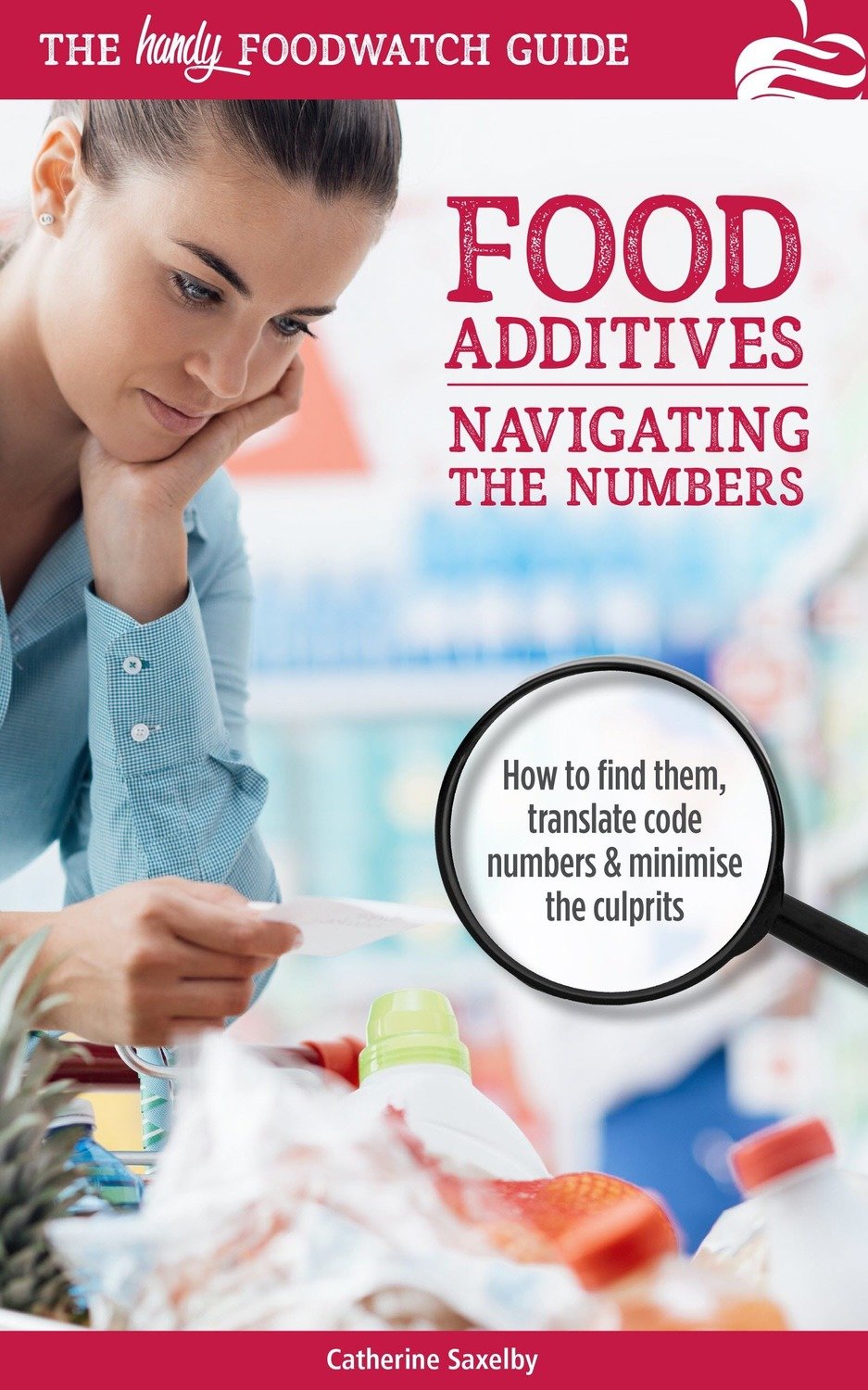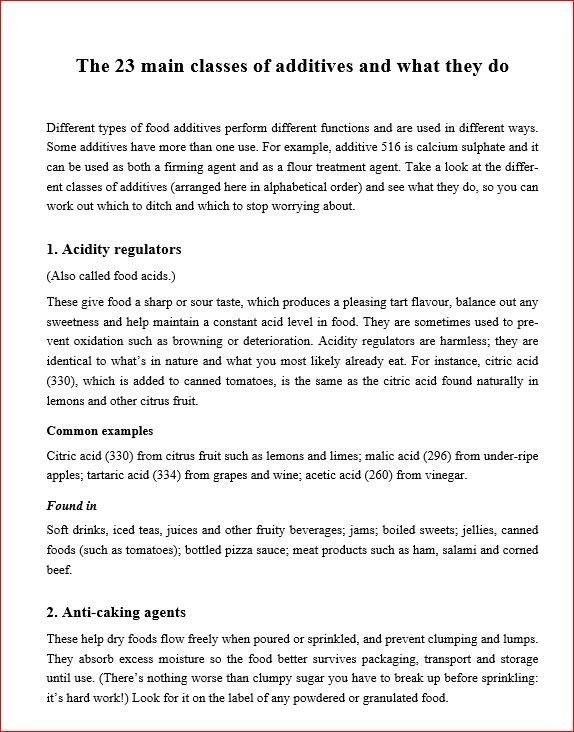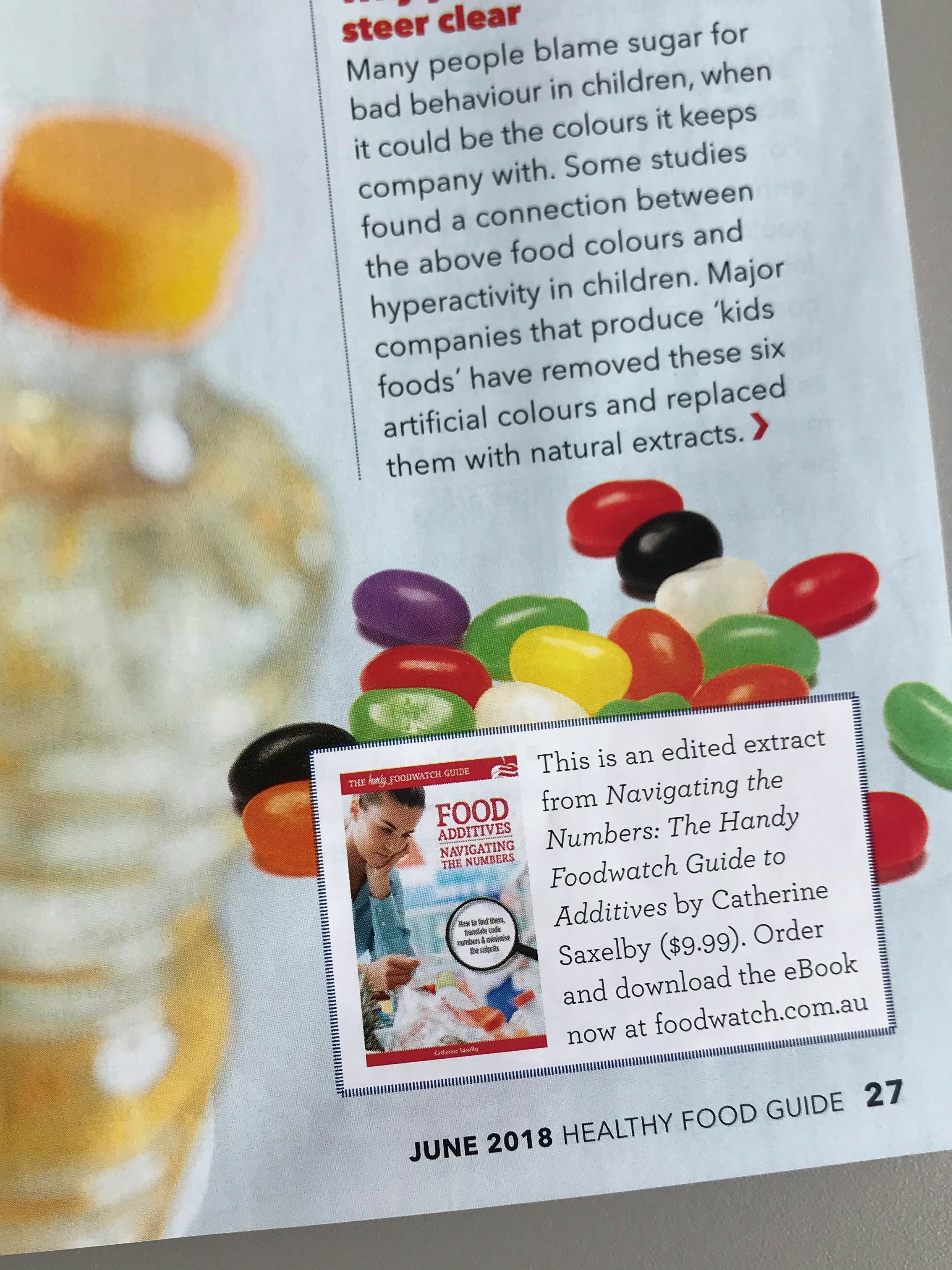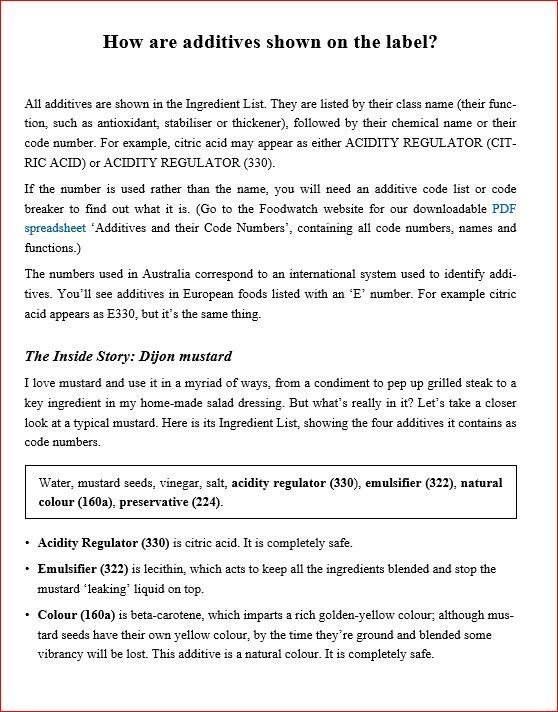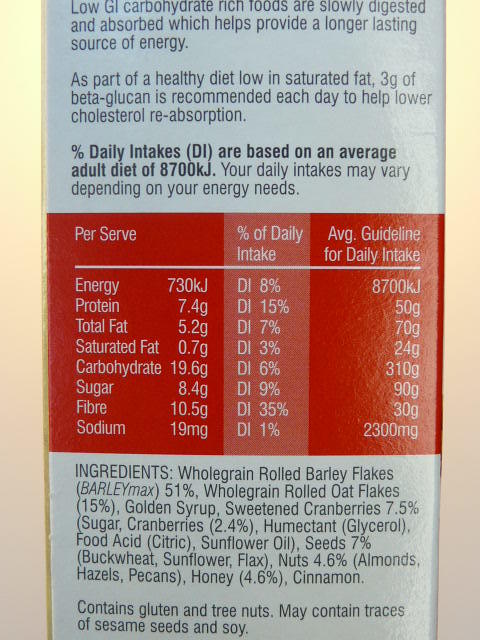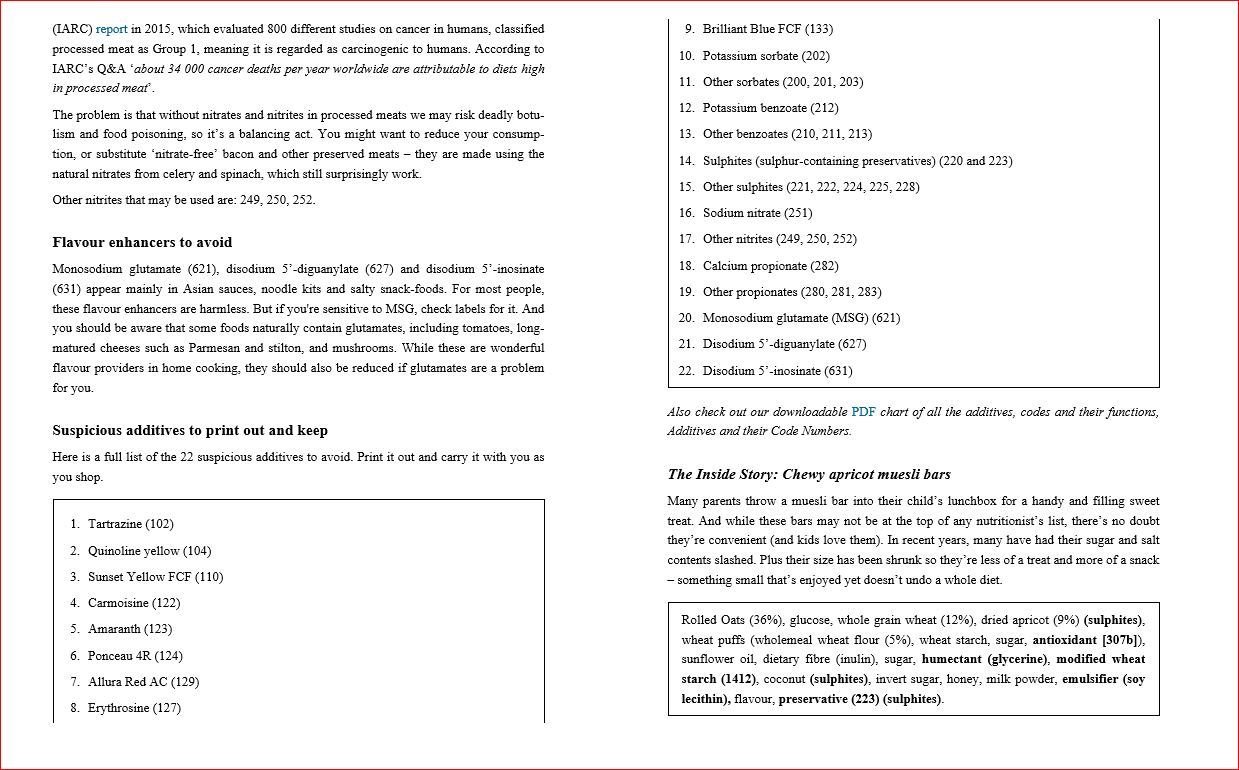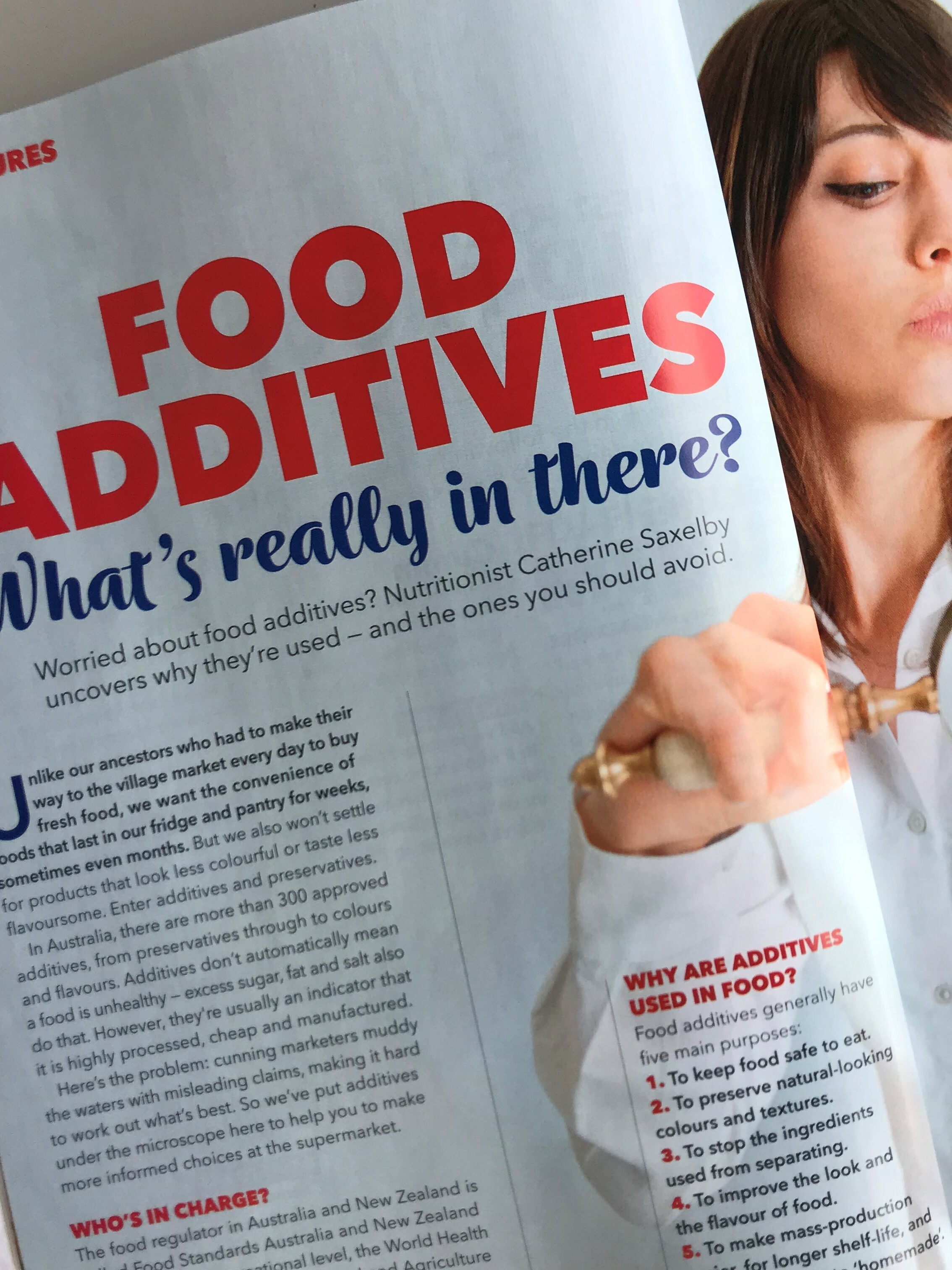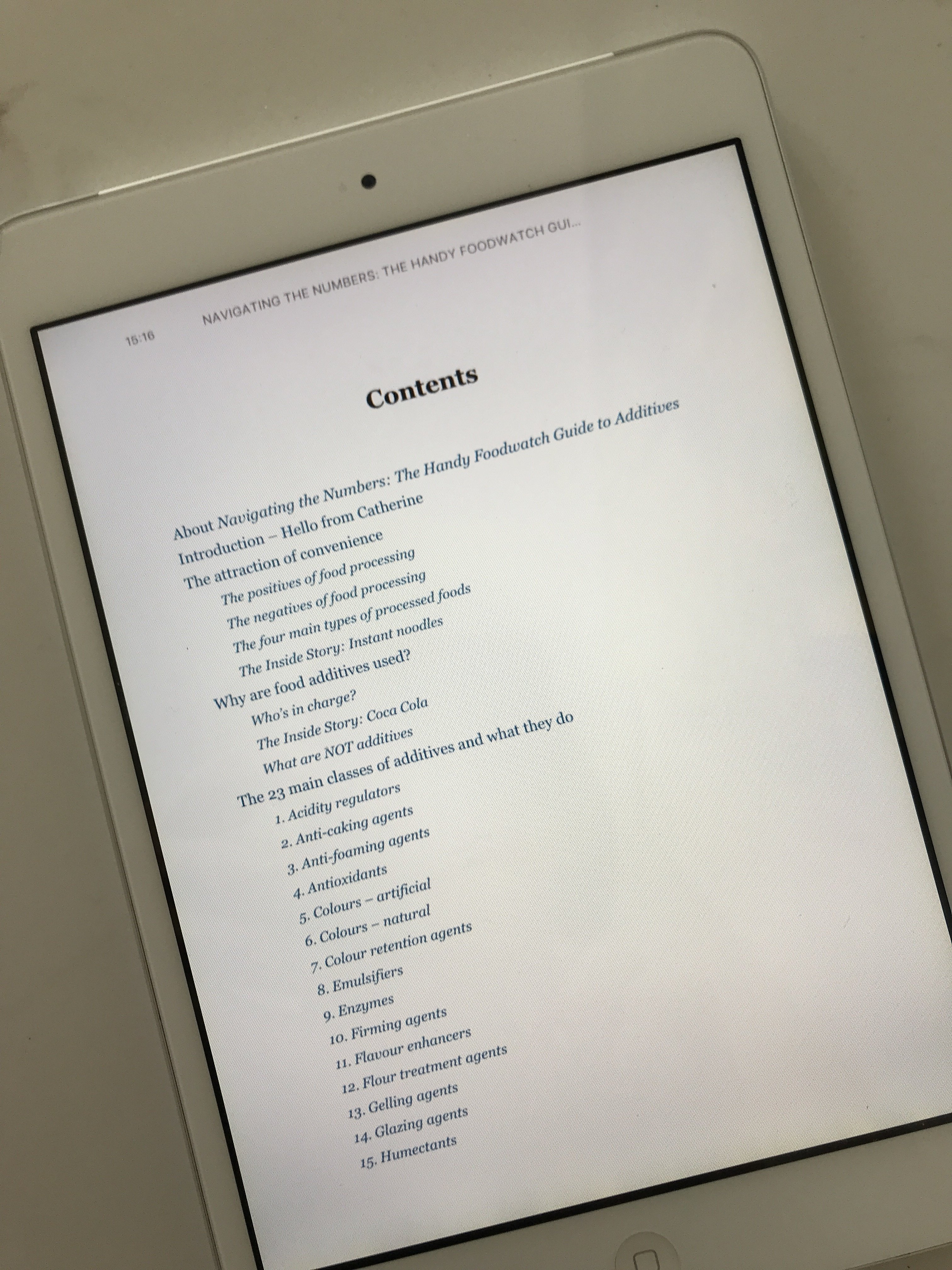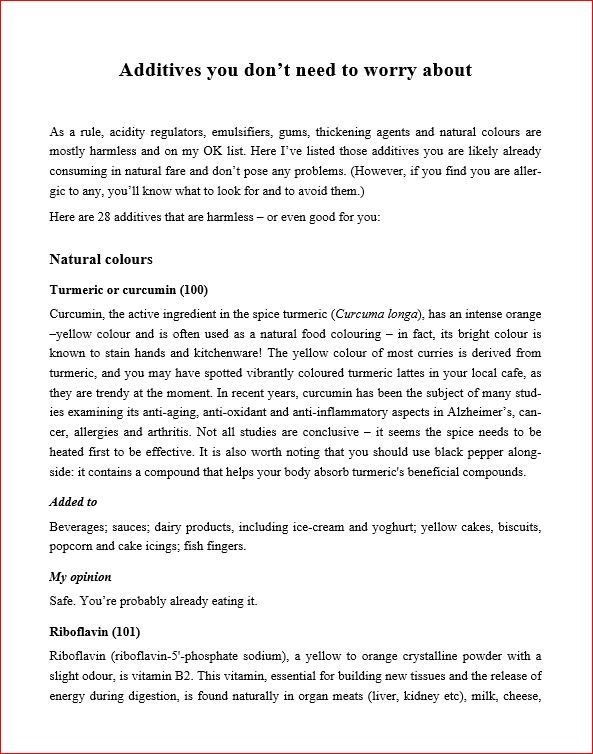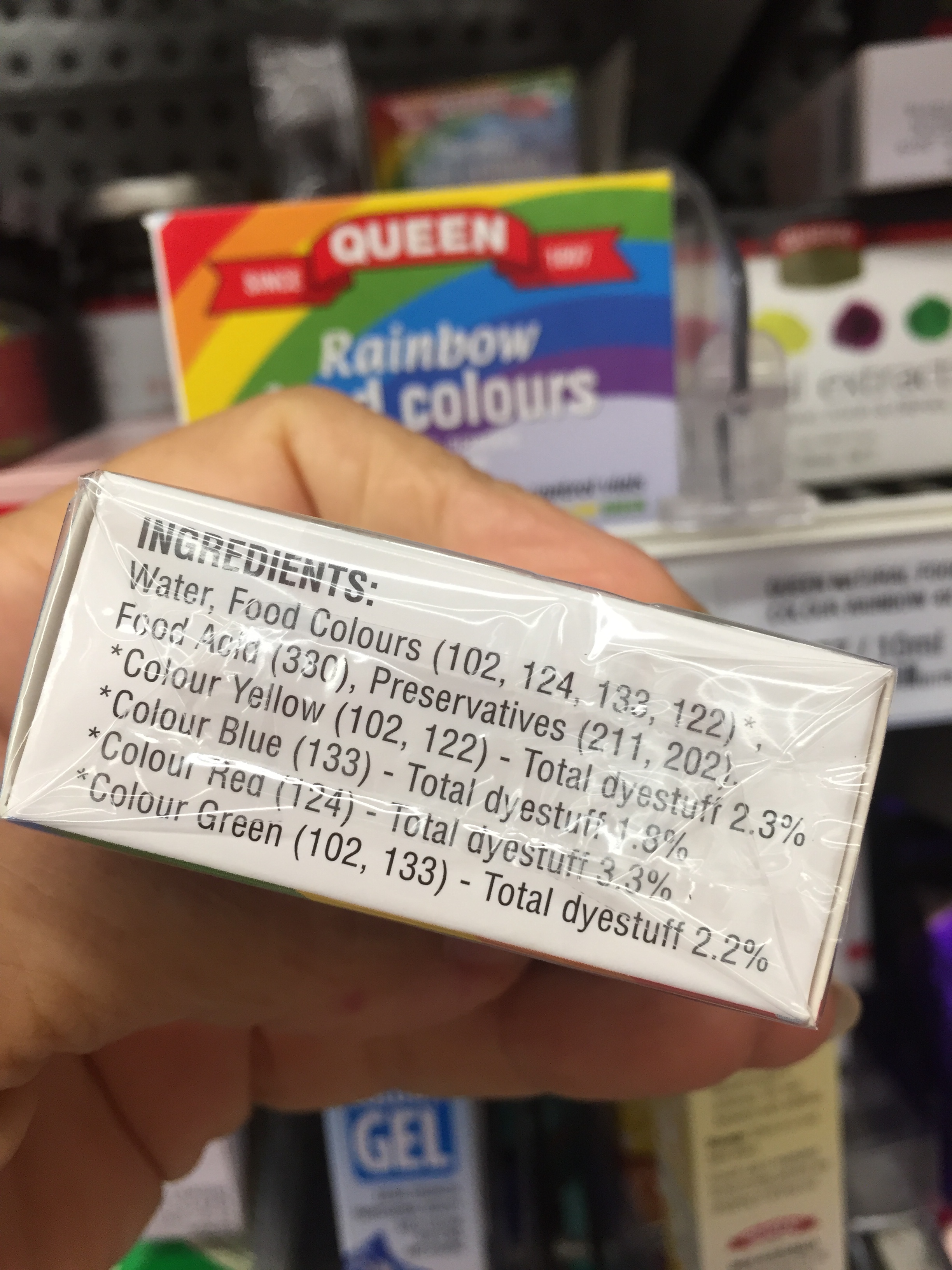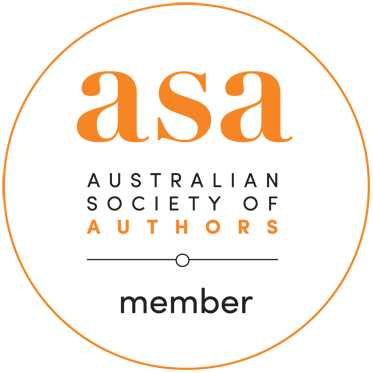Navigating the Numbers: FOOD ADDITIVES ebook
This ebook sheds light on why additives are used, where they come from and which ones should trigger your “Avoid” button.
This ebook sheds light on why additives are used, where they come from and which ones should trigger your “Avoid” button.

Additives are a part of modern food life but they’re not all bad. Despite our best intentions, we can’t always eat fresh and to make food safe, stable and taste good, we need a few additives. But which ones? This handy ebook tells you.
Cooking is similar to processing
This ebook explores the notion that cooking does similar things to processing, whether drying, salting, pickling, canning or freezing. Adding salt or sugar or soy sauce at home does not make food healthier and “better” than bought foods.
It outlines the 23 classes of additives in use and shows you how to find them on food labels. It lists those that are harmless or that you’re probably already consuming such as citric acid 330 (found in lemons and all citrus fruits) or magnesium sulphate 518, better known as Epsom salt that you add to a bath to soak in.
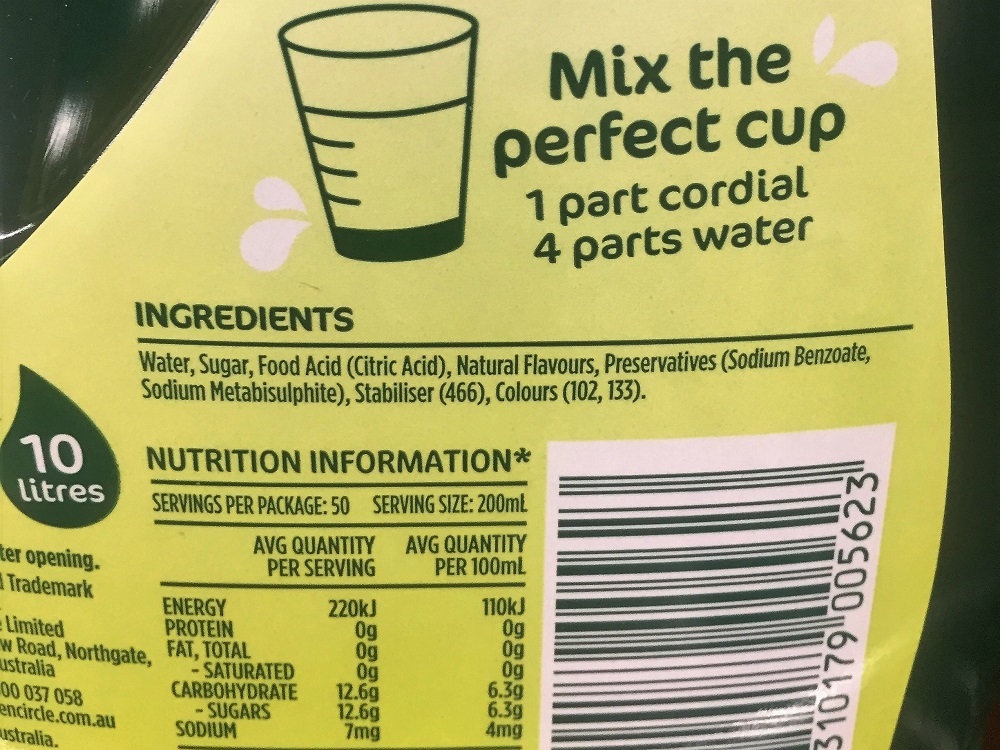
It lists those additives to steer clear of that have long been a problem such as the colours, preservatives and flavour enhancers. There’s a convenient list of the 18 suspicious additives for you to bookmark or print out and keep when shopping.
It finishes with a 4-step plan to avoid ALL additives if you still think you need to and describes the trend to “Clean Labels” that manufacturers are now adopting.
Drawing on her own experiences as a dietitian, educator and industry consultant, Catherine guides readers logically through the maze of information that is on any food label. She simplifies and makes it interesting and memorable. Through everyday examples (the "Inside Story"), she brings additives to life and shows the roles they play to keep food safe and fresh.
CLICK to BUY - just click "Buy Now"
Why I wrote this eBook
"I want to help you navigate a middle course where you can provide nutritious healthy meals for yourself and those you love with maximum convenience and minimum additives. There IS a balance between fresh and additive-free versus convenience plus additives. After years of working with the food industry and teaching others how to figure out the ingredients, let me now share these secrets with you". Catherine Saxelby
Book details
ISBN: 978-0-9875521-1-2
Format: ePUB, Mobi and PDF
Language: English
Number of words: 17,000
Equivalent to: 70 pages - read in under 2 hours
Country of origin: Australia
Publisher: Foodwatch Nutrition Hub
This eBook will be delivered to you as a digital download via a link in an email (not a physical book in the post).
You will receive an email summarising your purchase. At the base of that email is your account token. Log into Your Account (using the SAME email address you bought the ebook with) PLUS your account token. You will then be taken to a Summary page called “My Orders” where you will see Orders, Downloads and Address. Here you can download the three files (a PDF file plus an ePub file for reading devices such as a Nook plus a Mobi file for a Kindle).
If you have a Kindle, the ebook file can be downloaded onto the Kindle through the USB port - simply plug it in and treat the Kindle as an external drive.
Please DOWNLOAD as soon as you get the email. Read later at your leisure. You have one year and 10 attempts to download the files.

CLICK to BUY - just click "BUY NOW" above

Contents - here's what you'll get:
8 sections with 27 chapters to educate and inspire you to understand everything about food additives. I share “inside stories” where I analyse everyday foods as examples and explain why they contain the additives they do. Plus everything you need to figure out which are OK and which you should avoid.
Section 1
Introduction – Hello from Catherine
The attraction of convenience
The positives and the negatives of food processing
The four main types of processed foods
Section 2
Why are food additives used?
Who’s in charge?
What are NOT additives
Section 3
The 23 main classes of additives and what they do:
1. Acidity regulators
2. Anti-caking agents
3. Anti-foaming agents
4. Antioxidants
5. Colours – artificial
6. Colours – natural
7. Colour retention agents
8. Emulsifiers
9. Enzymes
10. Firming agents
11. Flavour enhancers
12. Flour treatment agents
13.Gelling agents
14. Glazing agents
15. Humectants
16. Mineral salts
17. Preservatives
18. Propellants
19. Raising agents
20. Sequestrants
21. Stabilisers
22. Sweeteners
23. Thickeners
What about additives with NO number?
Vitamins used in fortification of cereals, breads, juices
The Inside Story: Salad dressing
Section 4
How are additives shown on the label?
Section 5
Which additives should I steer clear of?
Colours to avoid
Preservatives to avoid
Flavour enhancers to avoid
Suspicious additives - to bookmark and keep or print out
Section 6
28 additives you don’t need to worry about:
Natural colours
Natural acidity regulators
Natural emulsifiers
Natural gums and gels
Natural mineral salts
Natural enzymes
Section 7
My 4-step guide to avoiding all additives
Section 8
Clean labelling and how additives are changing on the label
My conclusions on additives
References and websites
CLICK to BUY - only $9.99 - just click "Buy Now" above
Already buy from an online book store like Amazon or Kobo?
Head to this universal book link and then you'll find it instantly at any one of 12+ stores. Think Kindle (Amazon), Rakuten Kobo, Nook (Barnes & Noble), Apple, Indigo, Angus & Robertson, Booktopia, Thalia and Bol. It's https://books2read.com/NavigatingTheNumbers
You May Also Like
The Good Stuff
The Boring Stuff
© 2024 Foodwatch Australia. All rights reserved
Author photo by Kate Williams
Website by Joomstore eCommerce



